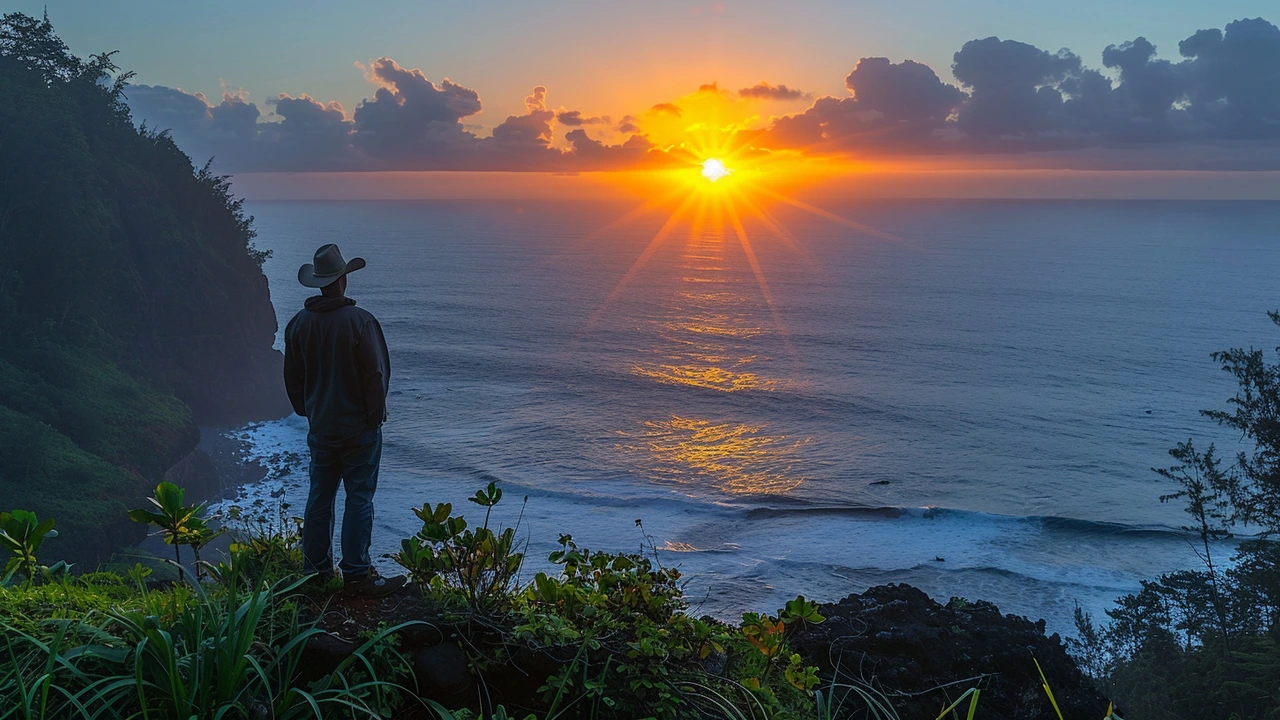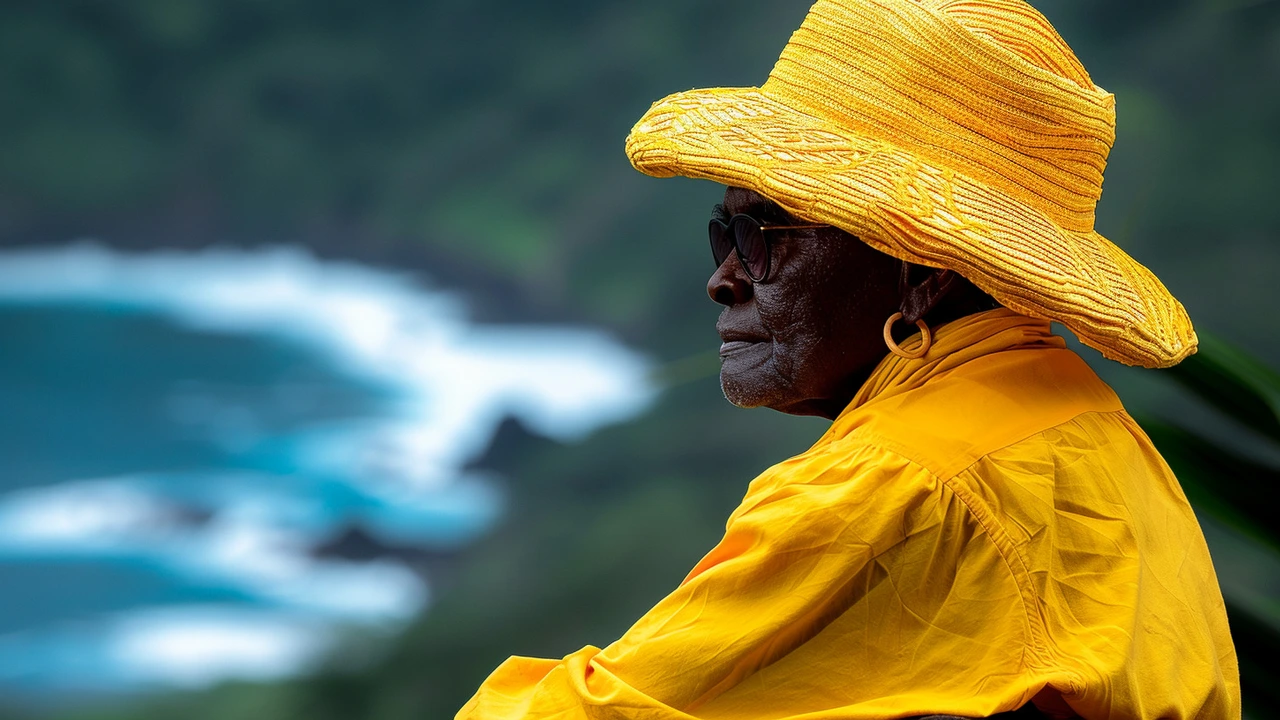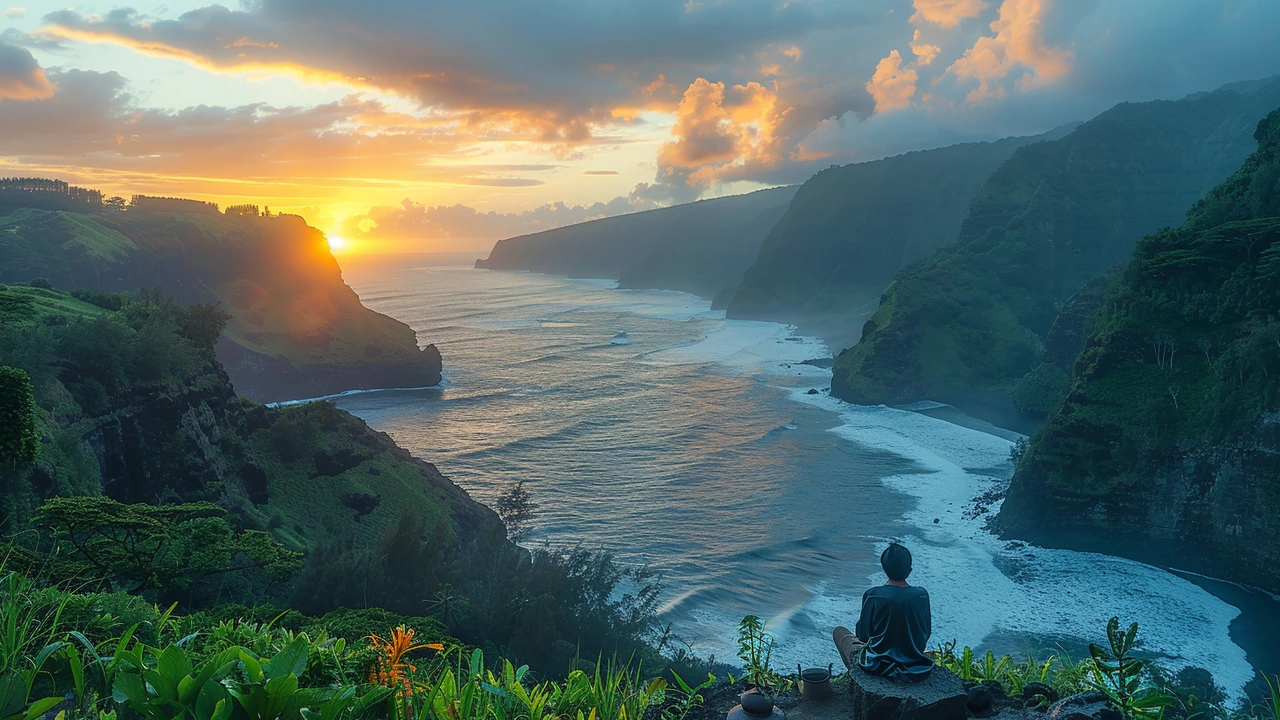10 Fascinating Facts About Kahuna You Probably Didn't Know
 Jun, 5 2024
Jun, 5 2024
The Kahuna are an integral part of Hawaiian culture that most people know little about. These spiritual leaders and professionals held a revered status within ancient Hawaiian society, contributing to various aspects of life, from medicine to navigation.
Delving into their history reveals a fascinating journey through time, where ancient practices meet modern interpretations. Understanding the roles and training of Kahuna grants deeper insight into their spiritual practices and the significant cultural impact they've had on Hawaii.
Join us as we uncover ten lesser-known facts about these iconic figures, offering a window into their world that will both intrigue and enlighten.
- History and Origins
- Roles and Responsibilities
- Training and Apprenticeship
- Spiritual Practices
- Cultural Impact
- Modern-Day Relevance
History and Origins
The history and origins of the Kahuna are deeply embedded in the vibrant culture and ancient traditions of Hawaii. The word "Kahuna" initially referred to any expert practitioner of a craft or profession. From priests to navigators, Kahunas were the master practitioners that people relied on for their phenomenal skills and wisdom. Their knowledge was not solely spiritual; it extended into medicine, agriculture, and even construction.
The term "Kahuna" predates even the earliest Western contact with Hawaii. The first recorded mention was by Captain James Cook in the late 18th century, who noted the presence of these wise individuals in his logs. Kahunas were often seen as intermediaries, bridging the gap between the divine and the human world. They used their skills to communicate with the gods, particularly during crucial events such as planting and harvest seasons, sailing voyages, and during times of illness.
"The Kahuna were the keepers of knowledge in traditional Hawaiian society. Their role as spiritual and practical experts allowed them to guide their people through every aspect of life." — Mary Kawena Pukui, Hawaiian scholar and author
The genealogy of becoming a Kahuna was rigorous. Potential candidates were selected based on their lineage and predisposition towards certain skills or spiritual sensitivity. This process ensured that the knowledge was kept within a trusted inner circle, maintaining the sanctity and purity of their practices. Over generations, this allowed Kahuna families to pass down their wisdom, keeping it alive and relevant to the changing needs of their communities.
Interestingly, the training of a Kahuna was secretive and intense, often beginning from a very young age. They were expected to observe and learn from the existing Kahunas, gradually mastering the complex rituals and practical applications of their craft. This training period could last many years, depending on the specific branch of Kahuna expertise one was destined for.
The reverence and respect for Kahunas are evident in Hawaiian chants, stories, and legends. Their influence can be seen in various archaeological sites scattered across the islands, which reveal the significant roles they played in building heiaus (temples) and other sacred structures. These sites are a testament to the high regard in which they were held, symbolizing their enduring legacy in shaping Hawaiian society.
Roles and Responsibilities
In ancient Hawaiian society, Kahuna held a variety of pivotal roles and responsibilities that were essential to the community's well-being. A Kahuna wasn't limited to one specific field but could specialize in numerous areas, such as healing, navigation, and even sorcery. Their knowledge and expertise often made them the go-to individuals for problem-solving and spiritual guidance.
The most well-known among them were the Kahuna La'au Lapa'au, the healers. They used herbs and natural remedies to cure ailments long before Western medicine reached the islands. Their knowledge of medicinal plants was extensive, and some of these traditional practices are still in use today. Another prominent role was the Kahuna Pule, who performed religious ceremonies and offered prayers to maintain harmony between humans and the gods.
The responsibilities of a Kahuna also extended to navigation. The Kahuna Kilokilo were skilled in reading the stars, ocean currents, and winds to guide voyagers across vast distances. These navigators were instrumental in the early Polynesian migrations and in keeping the Hawaiian islands interconnected. They passed down their knowledge through generations, ensuring that each new cohort of navigators could unerringly guide their communities.
Education was another critical responsibility. The Kahuna were often the keepers of knowledge and tradition. They trained apprentices in various fields, ensuring that valuable skills and cultural practices were preserved. This training wasn't just about imparting technical know-how; it also involved instilling a deep respect for nature and the spiritual world.
"The role of a Kahuna is to bridge the world of the living with the world of the spirits," explains cultural historian Leilani Mendez.
Kahuna also served as arbiters in conflicts and disputes. Their deep understanding of Hawaiian laws and customs positioned them as impartial judges who could mediate effectively. This role was crucial for maintaining social harmony, and their decisions were highly respected within the community. Their impartiality and wisdom made them a trusted authority in matters of justice.
Lastly, Kahuna were often involved in artistic and musical endeavors. They believed that music and dance were vital for maintaining spiritual balance. The Kahuna Hula, for instance, were masters of dance and chant. They used their art to tell stories, preserve history, and honor the gods. These performances were not merely entertainment but were deeply spiritual experiences that connected the community to their past and to the divine.
Understanding these roles helps us appreciate the multifaceted contributions of the Kahuna to Hawaiian society. They were not just priests or healers but were vital figures in education, navigation, justice, and the arts. Their responsibilities were far-reaching, and their impact can still be felt in modern Hawaiian culture.

Training and Apprenticeship
The journey to becoming a Kahuna is both rigorous and deeply spiritual. This path begins early in life, often from childhood, when a prospective Kahuna is chosen based on various factors including lineage, natural talent, and spiritual inclinations. It's not merely a profession but a calling that demands years of intense training and dedication.
The initial phases of training involve learning through observation and hands-on experience. Young apprentices, known as 'haumana', are taught by seasoned Kahuna in a mentor-student relationship that continues for many years. They are instructed in a range of disciplines such as herbal medicine, spiritual rituals, and even navigation. The process is holistic, aiming to cultivate not just skills but also virtues like humility, respect, and responsibility.
The ancient Hawaiian proverb, "Ma ka hana ka 'ike," meaning "In working, one learns," encapsulates the apprenticeship ethos perfectly.
The curriculum for a Kahuna apprentice is diverse. They learn 'la'au lapa'au' (herbal medicine), 'ho'oponopono' (conflict resolution and forgiveness practices), and 'lomi lomi' (traditional Hawaiian massage). Additionally, they are also taught chants, prayers, and rituals essential for spiritual communication. Mastery in these areas signifies a deep understanding of the interconnectedness of mind, body, and spirit.
Mentorship is at the heart of Kahuna training. An apprentice often lives with the mentor, partaking in daily chores and communal activities. This close-knit environment facilitates a blend of formal lessons and life experiences. It ensures that knowledge is passed down through generations in its purest form, preserving the wisdom and practices of ancient Hawaiian culture.
Interestingly, the training is not rigidly structured. Hawaiian culture values experiential learning, making each teaching moment uniquely suited to the apprentice’s growth. This flexibility allows for personalized education, ensuring that each apprentice's strengths and talents are honed to their fullest potential.
Besides practical knowledge, apprentices undergo spiritual training. They practice meditation, participate in sacred ceremonies, and often undertake solo journeys into nature, called 'anahuli', to connect with spiritual realms. These experiences are designed to deepen their understanding of the universe and their place within it.
Graduating to the status of Kahuna is marked by a significant ritual. This initiation ceremony, often performed before the community, symbolizes the apprentice’s readiness to serve. From this moment, they earn the right to be called Kahuna and take on the responsibilities that come with it. This includes healing the sick, mediating disputes, and officiating important cultural rites.
The training and apprenticeship of Kahuna are as multifaceted as the roles they assume. It blends intense scholarly learning with profound spiritual development, ensuring that each Kahuna is well-equipped to serve their community. The dedication and rigor involved underline the deep respect these revered figures command within Hawaiian culture.
Spiritual Practices
The spiritual practices of Kahuna have long been a subject of fascination and mystery. At the heart of their spiritual work lies a profound connection with nature and the divine. A Kahuna's life is dedicated to harnessing the spiritual energies that they believe are part of all living things. This connection is nurtured from a young age through rigorous training and deep immersion in the natural world of Hawaii.
One of the most intriguing aspects of Kahuna practices is their use of prayers, or 'Oli,' which are often chanted in a melodic and rhythmic pattern. These chants serve multiple purposes, from calling upon the spirits of ancestors for guidance to invoking blessings for good health and harvests. Each chant is unique and crafted for specific occasions, demonstrating the Kahuna's deep knowledge of their cultural heritage and spiritual language.
The Kahuna also engage in various rituals that involve offerings to the gods and elements. Offerings might include food, flowers, and other natural items that hold significance. These rituals are performed at various sacred sites, known as 'heiau,' which can be found throughout the Hawaiian Islands. These sites range from small stone altars to large temple complexes, each serving as a focal point for spiritual activities. The Kahuna ensures that these sites are maintained and respected, acting as stewards of these sacred spaces.
Another crucial aspect of their spiritual practice is healing. Kahuna were traditionally the primary healers in Hawaiian communities, utilizing a combination of herbal medicine, massage (known as 'lomilomi'), and spiritual counseling. This holistic approach to healing emphasizes the balance between physical, mental, and spiritual health. Each ailment is addressed uniquely, taking into consideration the individual's spiritual state as well as physical symptoms.
Dream interpretation is also a significant part of a Kahuna's spiritual practice. Dreams are considered messages from the spiritual world, offering insights and guidance. A skilled Kahuna can interpret these dreams, aiding individuals in understanding their deeper meanings and how they relate to their waking lives. This practice underscores the Kahuna's role as a bridge between the human and spiritual realms, providing wisdom and direction.
The role of the Kahuna in ceremonies and festive occasions cannot be overstated. Whether it's a birth, marriage, or other milestone, the presence of a Kahuna is customary to bless the event and ensure spiritual harmony. Their involvement imbues these occasions with deeper meaning and connects participants with their cultural roots.
Within all these practices, there's a strong emphasis on community and connection. The Kahuna's work is not just for individual benefit but for the well-being of the entire community. By maintaining spiritual balance and fostering a deep respect for nature and tradition, the Kahuna plays a vital role in preserving the cultural fabric of Hawaiian society.
According to Mary Kawena Pukui, a renowned Hawaiian scholar, "The Kahuna studied, prayed, and prepared with utmost dedication, always mindful of their responsibility to their people and the divine." This quote captures the essence of the Kahuna's dedication to their spiritual and communal roles.
Cultural Impact
The Kahuna have left an indelible mark on Hawaiian culture that continues to resonate today. These spiritual leaders were not merely religious figures; they were also masters of various arts, sciences, and industries, leading their communities with exceptional knowledge and wisdom. Their influence permeated many facets of Hawaiian life, bringing both social and intellectual enrichment to their communities.
One notable aspect of their cultural impact is their role in maintaining traditional knowledge and customs. The Kahuna were crucial in preserving oral histories, genealogies, and mythologies, ensuring that the cultural heritage of Hawaii was passed down through generations. This role was particularly vital in a society that, for a long time, did not have a written language. These oral traditions, captured from generation to generation, became the backbone of Hawaiian identity and pride.
Their influence also extended to the practical applications of knowledge, such as medicine and agriculture. Kahuna lapa'au, or healing priests, combined spiritual practices with an extensive understanding of native plants and herbs to provide medical care. Their holistic approach to medicine emphasized the interconnectedness of mind, body, and spirit, a philosophy that is still appreciated in modern holistic health practices. Similarly, Kahuna ku ho'onele, or agricultural experts, developed sophisticated techniques for cultivating crops, which optimized the use of Hawaii's unique environment.
Moreover, the teachings and practices of the Kahuna are woven into the very fabric of Hawaiian hula and chant, two fundamental aspects of the islands' cultural expression. Hula kahiko, or ancient hula, performed by dedicated dancers to the rhythm of traditional chants, often carried deeper meanings inspired by Kahuna wisdom. This combination of movement and sound created a powerful medium for storytelling and cultural preservation.
In modern times, the legacy of the Kahuna is visible in the resurgence of interest in Hawaiian spirituality and traditional practices. Educational programs and cultural workshops often include teachings about the ancient methods and philosophies of the Kahuna, reflecting a growing recognition of their importance to Hawaii's cultural heritage. People are looking back at these timeless practices to find solutions for contemporary problems, bridging past and present in meaningful ways.
The role of Kahuna also extends into contemporary Hawaiian identity politics. As Hawaii navigates its place within a broader global context, the wisdom and teachings of the Kahuna offer a foundation upon which to build a more culturally inclusive and informed future. For many, the Kahuna symbolize a return to roots, a deeper understanding of self and place that transcends mere historical study. They serve as a testament to the enduring power of indigenous knowledge and its relevance in today's world.
Lastly, the spiritual dimension of Kahuna teachings cannot be understated. Their role in conducting ceremonies and rituals was pivotal in connecting people to the divine, the natural world, and each other. These practices fostered a sense of community and continuity, elements that are essential in maintaining a strong cultural identity. Even today, spiritual practices influenced by Kahuna teachings are used to promote healing, connection, and growth within communities, underscoring the lasting impact of these revered figures on Hawaiian culture.
Modern-Day Relevance
In today’s world, the term Kahuna may not be as prevalent as it once was, yet their influence persists in subtle and profound ways. Many people still seek the wisdom of contemporary Kahunas for guidance in various aspects of life, including health, spirituality, and even business. The enduring appeal of these spiritual leaders stems from their holistic approach to well-being and their deep connection to Hawaiian traditions.
Modern-day Kahunas often blend ancient practices with contemporary techniques. For instance, traditional Kahuna healing techniques, like Lomi Lomi massage, are now taught in spas worldwide. These massages are not just about physical healing but encompass emotional and spiritual well-being, reflecting the Kahuna’s comprehensive view of health.
Another area where the Kahunas still leave their mark is in the field of environmental conservation. Their ancient wisdom about maintaining a balance with nature resonates deeply with current ecological movements. Many conservationists look to the wisdom of the Kahunas for advice on sustainable practices. The concept of Malama 'Aina (to care for the land) is a core principle promoted by Kahunas, a philosophy that draws attention to the need for environmental stewardship in our rapidly changing world.
Education is another important realm where Kahunas continue to contribute. Courses on Hawaiian culture, history, and spirituality often feature teachings attributed to historic Kahunas. These courses help preserve the rich cultural heritage of Hawaii and educate new generations about the island’s traditions. Recently, the University of Hawaii initiated a program that includes Kahuna teachings in its curriculum, aimed at integrating native wisdom into modern education systems.
As Dr. Kahu Silva, a renowned cultural practitioner, notes, “The teachings of the Kahunas provide a comprehensive blueprint for living in harmony with our environment and each other.”Moreover, the principles of leadership and personal development taught by Kahunas find application in modern business practices. Organizations often invite Kahunas to conduct workshops on mindfulness, team cohesion, and ethical leadership. Such practices underscore the growing recognition of the value of ancient wisdom in cultivating effective and compassionate modern-day leaders.
Interestingly, the influence of Kahunas extends even to popular culture. Movies, books, and TV shows sometimes depict Kahunas, albeit often sensationalized, showing the lasting intrigue and fascination with these captivating figures. While not always accurate, these portrayals keep the spirit of the Kahuna alive in mainstream culture, prompting curiosity and interest in learning more about the true essence of their teachings.
Finally, it's worth noting the role of Kahunas in the ongoing cultural revival among Native Hawaiians. Efforts to reclaim and restore traditional practices have seen significant contributions from contemporary Kahunas who act as custodians of ancient knowledge. They play a pivotal role in the rediscovery and revitalization of traditional Hawaiian practices such as hula, navigation, and oral storytelling.
The way Kahunas weave the past with the present keeps their wisdom timeless and invaluable. They serve as a bridge connecting ancient traditions with present-day needs, ensuring the perpetuation and relevance of Hawaiian culture in an ever-evolving world.